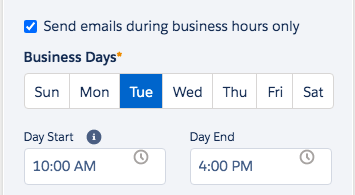Making your email message stand out in a cluttered inbox is always a challenge. While we expect to be going toe-to-toe with our competitor’s this arena, it can be especially bothersome when we also have to compete with other divisions of our own company. While small companies rarely experience this issue, it is a perpetual hazard for large organizations, or medium -sized companies who split their marketing initiatives over multiple product lines.
Inter-company cooperation is as delicate as any international alliance, and can be just as difficult to maintain. Each department, focused on its own goals, is motivated to act alone and execute campaigns, unaware, or indifferent to the fact that other divisions may have set their sites on the same pool of prospects.
While this may look fine from the deployment side of the equation, it can appear quite differently on the receiving end of things. The randomness of un-coordinated campaigns can lead to periods when inbound communications seem to go silent, and then suddenly shift to where three or four emails are received on the same day. To say nothing of the monthly newsletter showing up at an inopportune time. Such occurrences can be detrimental to good will, and if repeated may even lead to a hasty “unsubscribe from all communications”. This is especially undesirable since the prospect who has signed up for the most correspondence has also demonstrated the highest level of interest. The happenstance of same-company email traffic jams, (for lack of a better term), can end up alienating your best leads and contacts.
And so with the problem laid out, I propose an extraordinarily simple remedy. A solution that is so simple that I initially hesitated to write this blog because I thought the answer might be too self-evident. Still, I frequently see large companies wrestling with this problem, so I thought I would put the idea out there and let you, the reader, decide. Here’s the answer; have each division speak for a day of the week that represents their division, (audible gasp from the audience). Yup – it could be that simple.
Here’s why email calendars are generally impossible to coordinate otherwise. In general, marketers use a set of Monday through Friday working days to calculate campaign deployments, thereby avoiding the weekends that in turn bump emails from Saturdays and Sundays to Monday. This advances some prospects faster than others through the cadence, depending on the point at which they were introduced to the nurture campaign. Factor in advances based on opens and clicks and it becomes almost impossible to predict which day a prospect will receive a particular email. Overlap three or four other nurture campaigns and the result can be quite chaotic from the receivers perspective.
In contrast to that scenario, let’s say we convince the division heads in a large company to buy-in to the division-a-day scenario. Each product category gets its own day to have it’s voice and the prospect’s inbox is never ganged up on. It’s hard to find a down-side.
So how would this work? Let’s take a business-to-business insurance company as an example. We might have the following separate divisions:
- property liability
- liability insurance
- commercial vehicle insurance
Each division could be assigned Tuesday, Wednesday and Thursday respectively. Let’s tag the Newsletter with a Friday deployment.
Operationally, this is a snap to set up. Using the marketing automation platform Pardot as an example, all we would have to do is designate Tuesday as the exclusive day for Property liability communications. In setting up the nurture campaign, there’s not even any need to calculate the specific number of wait days, any cadence between one to seven days for a wait period will have an email deploying on Tuesday. Any cadence between eight and fourteen will see the email going out every other week.



